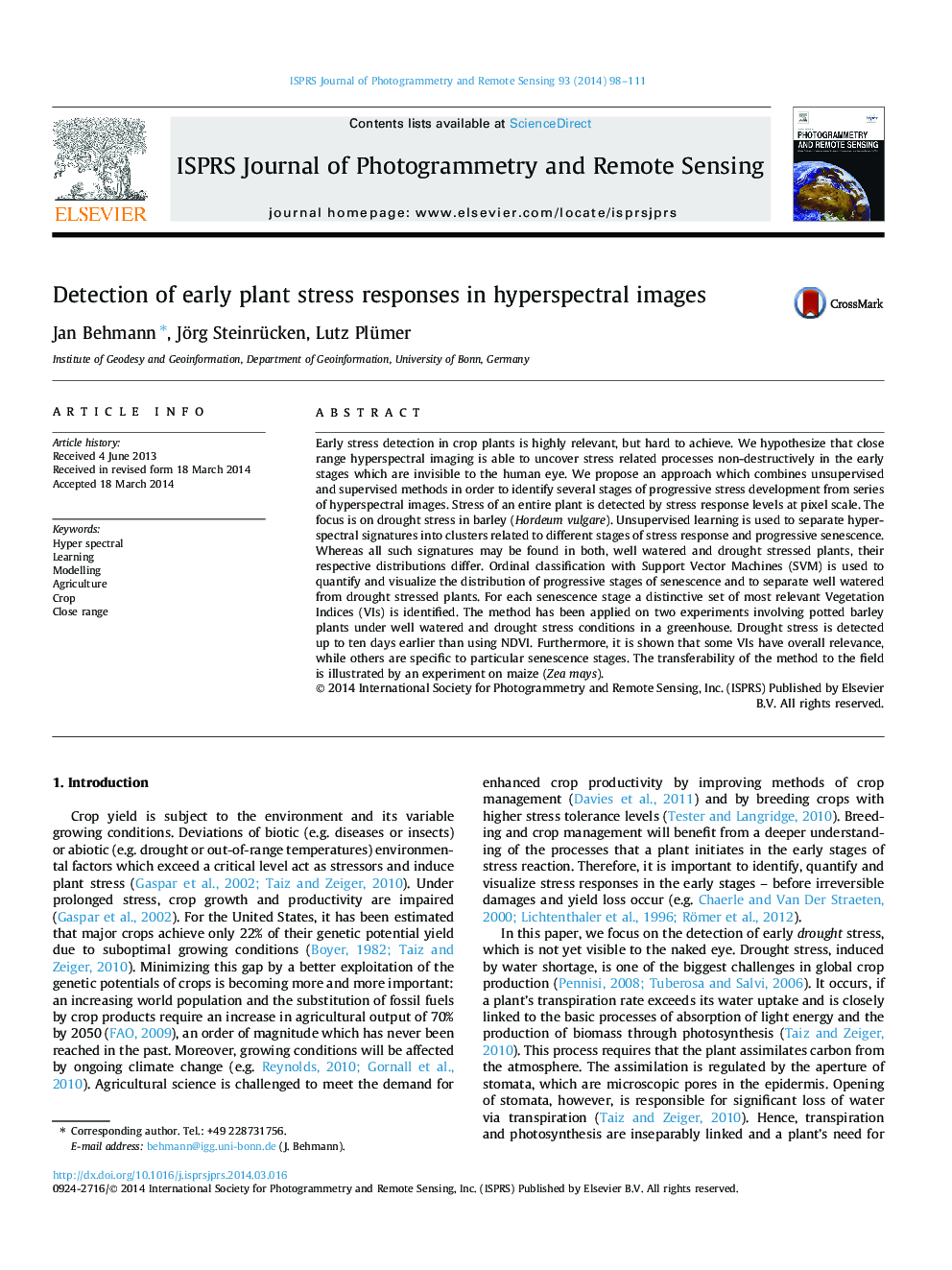| Article ID | Journal | Published Year | Pages | File Type |
|---|---|---|---|---|
| 6949650 | ISPRS Journal of Photogrammetry and Remote Sensing | 2014 | 14 Pages |
Abstract
Early stress detection in crop plants is highly relevant, but hard to achieve. We hypothesize that close range hyperspectral imaging is able to uncover stress related processes non-destructively in the early stages which are invisible to the human eye. We propose an approach which combines unsupervised and supervised methods in order to identify several stages of progressive stress development from series of hyperspectral images. Stress of an entire plant is detected by stress response levels at pixel scale. The focus is on drought stress in barley (Hordeum vulgare). Unsupervised learning is used to separate hyperspectral signatures into clusters related to different stages of stress response and progressive senescence. Whereas all such signatures may be found in both, well watered and drought stressed plants, their respective distributions differ. Ordinal classification with Support Vector Machines (SVM) is used to quantify and visualize the distribution of progressive stages of senescence and to separate well watered from drought stressed plants. For each senescence stage a distinctive set of most relevant Vegetation Indices (VIs) is identified. The method has been applied on two experiments involving potted barley plants under well watered and drought stress conditions in a greenhouse. Drought stress is detected up to ten days earlier than using NDVI. Furthermore, it is shown that some VIs have overall relevance, while others are specific to particular senescence stages. The transferability of the method to the field is illustrated by an experiment on maize (Zea mays).
Related Topics
Physical Sciences and Engineering
Computer Science
Information Systems
Authors
Jan Behmann, Jörg Steinrücken, Lutz Plümer,
